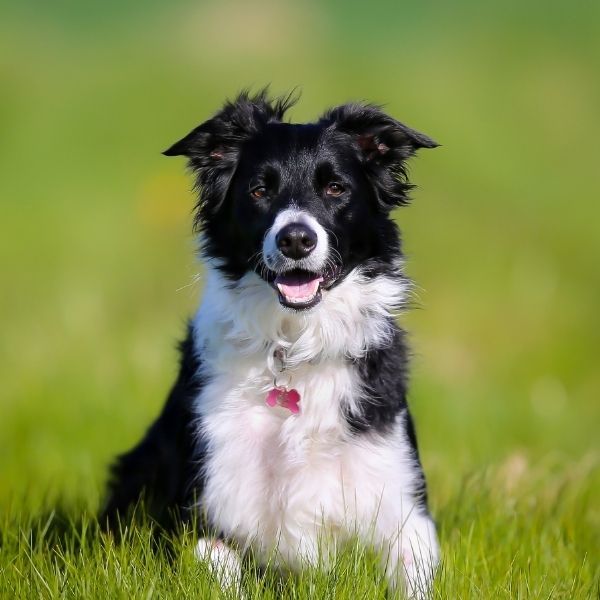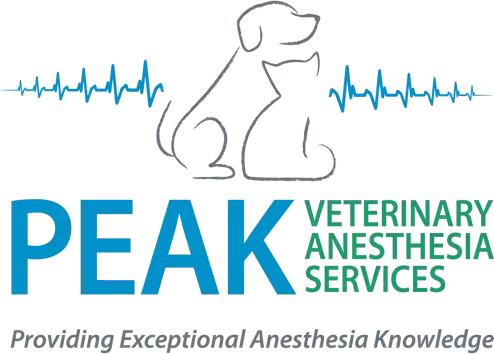
Anesthesia and Your Pet
If your veterinarian has recommended that your pet undergo a procedure requiring general anesthesia, it can be an anxious time for both you and your pet. We are pleased to provide you with information to explain what happens when your pet undergoes anesthesia.
In order to provide peace of mind and the best possible outcome from the anesthetic procedure, we are available to provide advanced care for your pet through the services of a dedicated PEAK veterinary anesthesia service specialist. If you are interested in having us provide this service for your pet, please discuss it with your veterinarian and have him or her contact us for additional information.

Does my pet need a dedicated anesthesia specialist?
PEAK Veterinary Anesthesia Services strives to make every anesthetic procedure as safe as possible, and some patients (such as those with liver, kidney, heart, or lung disease) are at a greater risk of experiencing complications. Commonly used anesthesia drugs can produce significant physiologic changes, including low blood pressure, decreased breathing, and abnormal heart rhythms. Our veterinary anesthesia technician specialists are specially trained to manage the risks that are inherent in anesthetic procedures, especially for those pets with underlying health conditions.
The anesthesia technician specialist’s sole function is to help ensure the ongoing health and safety of your pet during the procedure. Under the supervision of your veterinarian, the veterinary anesthesia technician specialist continuously assesses your pet’s physical response to the anesthesia and the procedure being performed and makes adjustments to the type and amount of anesthetic and analgesic agents being administered.
PEAK Veterinary Anesthesia Services provides state-of-the-art monitoring comparable to what human patients receive when they are anesthetized. Standard monitoring includes evaluation of heart rate and rhythm (ECG), blood oxygenation (pulse oximetry, or SpO2), exhaled carbon dioxide (ETCO2), blood pressure, and temperature. Some more critical cases will receive a special catheter to more accurately and more rapidly monitor changes in blood pressure.
We are available to provide your pet with exceptional anesthetic care before, during, and after the procedure, regardless of his or her underlying health condition.

How will my pet be evaluated for anesthesia?
Your pet will undergo a complete anesthesia evaluation, including a physical examination and review of his or her medical history. Based on this initial evaluation and the procedure to be performed, and in collaboration with and under the supervision of your veterinarian, we will help develop a detailed anesthetic plan tailored to the specific needs of your pet. This is the first step towards well-managed anesthesia care.
This plan will include:
- Anticipated anesthesia and procedural problems, along with strategies for resolution
- Anesthesia drug doses and supportive care program
- Recommended physiologic monitoring
- Post-anesthesia recovery plan

What will happen during my pet’s anesthesia procedure?
In most cases, your pet will be given medications that will help reduce his or her stress and provide excellent pain control. An intravenous catheter will be placed for drug and fluid administration. When it is time for your pet to be anesthetized, he or she will have oxygen administered via a mask to help prevent a dangerous drop in blood oxygen, a common complication at Colorado’s high altitude. Next, your pet’s anesthetist will administer drugs that will allow your pet to relax enough so that a tube can be placed in his or her trachea. Your pet will then breathe a combination of oxygen and anesthetic gas for the duration of the procedure. Additional drugs may be given during the procedure, such as antibiotics, pain medications, and drugs to help improve blood pressure.
The anesthesia specialist will continue to watch over your pet until he or she is stable and recovering smoothly from anesthesia.
Once the procedure is finished, your pet will be moved to a quiet recovery area where his or her vital signs will continue to be monitored, additional pain medications will be given if necessary, and he or she will be warmed up to a normal body temperature. When your pet is awake enough, the breathing tube will be removed. He or she will continue to be monitored closely during the recovery period.
We will also provide a detailed paper record of your pet’s anesthetic procedure to be kept as part of his or her permanent medical record.

Ready to connect?
We look forward to seeing how we can help you! Please click the Get Started button below to request information about our available services.
GET STARTEDWe proudly serve the veterinary professionals, pet owners, and pets of Colorado, Wisconsin, and beyond.
We are your pre-eminent source for advanced veterinary anesthesia and analgesia services. We look forward to hearing from you!



